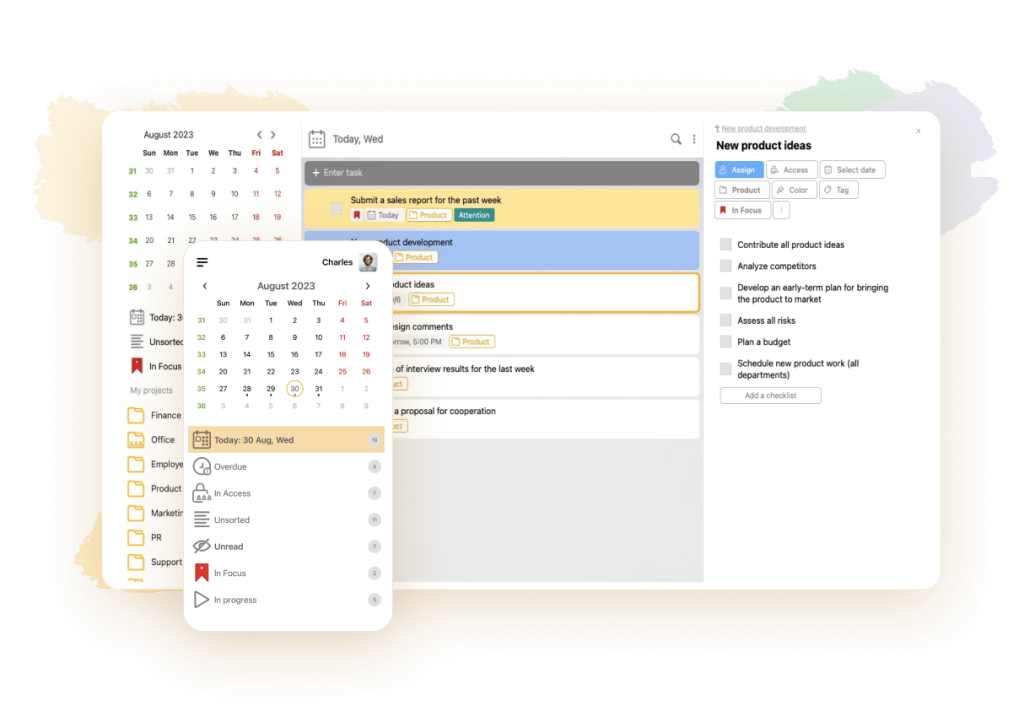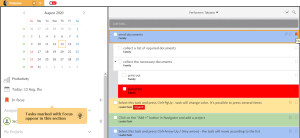Project Life Cycle

Any activity consists of projects. Each of them has a beginning, a length, and an end. The period of time from the start to the end forms the project life cycle (PLC). It includes certain phases, the completion of each of which is accompanied by some result.
Understanding the characteristics of each phase helps managers and supervisors to lead projects effectively. Minimize the risks associated with them. Improve communication between implementers and customers. Be confident that the goal is achievable with the available resources. Let’s take a closer look at the main phases and stages of a project. Let’s try to understand how to use their potential for successful project management.
Essence, peculiarities of the project life cycle

Project Life Cycle is a certain sequence of stages through which a project passes. Their number, composition, and structure depend on the complexity and specifics of the project. Regardless of the scale, project life cycles have the following features:
- The beginning and the end of the project are characterized by low rates. The greatest amount of costs for its realization falls in the middle of the cycle.
- At the initial stage there is the highest level of risk, there are doubts about the success of achieving the planned result.
- It is easier to make any changes, to improve the methods of achieving goals at the initial stages of the life cycle. At later stages it is difficult or impossible to do so.
For business people, a project starts with the investment of monetary resources to develop the business. The start and completion of a project is always documented.
Phases of the project life cycle
Any project life cycle consists of five phases:
- Initiation;
- Planning;
- Execution;
- Control;
- Ending.
Usually they follow a set sequence, one after the other. But, sometimes, under the influence of various external or internal circumstances, the team has to return to the planning stage to make the necessary adjustments. The phases are divided into stages of the project life cycle.
Let’s look at the main phases of the project in more detail.
Initiation
At this stage, the project is conceptualized. Preparations are made for its planning and implementation. To begin with, it is necessary to approve the task for the team. Make sure that its successful fulfillment will help to achieve the desired result. In the initiation phase, there are many discussions, approvals, research related to the existence of the future project. Meetings with potential partners are scheduled. Common goals are defined. Their achievement will allow the stakeholders to get the desired results.
The agreements reached are documented by fixing the main theses and agreements in the Charter. This is a short, formal document describing the essence of the project. It is the basis for further planning. The Charter contains the following information:
- Purpose, mission;
- The benefits of its implementation;
- A list of possible threats and risks;
- List of partners and stakeholders.
In the Charter it is obligatory to specify the benefits of the project realization for the business. This will give an understanding that all efforts and costs will not be spent in vain.
Planning
This stage is accompanied by a roadmap or detailed plan detailing the actions of each participant. If we compare the life cycle of a project to the construction of a house, the planning phase is where the development, cost estimates and completion dates are approved. Because of neglecting the planning phase, about half of the projects do not reach the final end, turn out to be unprofitable or unrealistic.
At the planning stage, the workflow is broken down into small tasks. A suitable team is selected and roles are distributed among the participants. Step-by-step instructions with deadlines are developed. In order for the tasks to be feasible, it is necessary to make sure that there are enough resources for them during this phase.
After scheduling, designation of areas of responsibility, analysis of risks and ways to prevent them, a general organizational meeting is held. At this meeting, all the most important stages of the project are discussed. Tools for accomplishing the tasks are selected. The result of the meeting should be a clear understanding of each team member’s role and degree of involvement in the project.
Every performer and responsible person should have free access to the plan to solve current issues. This will allow the team to always be aware of any changes in the workflow.
Execution
Returning to the example of building a house, we can say that in this phase there is active work on laying the foundation, building the walls and the roof. That is, all the plans are realized by the joint efforts of the team. The execution phase starts right after the organizational meeting.
The manager’s task at this stage is to control the performance of the work. For this purpose, it is necessary to organize the rational distribution of additional resources. Distribute assignments to subordinates, provide them with references to the plan so that they can check with it as the work progresses.
Control
This phase starts from the moment of initiation. In order to successfully establish the workflow, it is important to follow up on the project from the very beginning. This phase requires a certain amount of flexibility on the part of the manager. Sometimes it is necessary to go back to the initial stage of the plan to make adjustments. All changes are necessarily coordinated with the team members and the client. For this purpose, interim meetings are organized, where feedback from the participants on the workflow is considered. Changes and additions are discussed.
Completion
This is the final phase, marking the final completion of the project. At this stage, the documentation is signed and handed over to the client or the team that will work on the project in the future. Errors are analyzed. It is necessary to do this in order to prevent their repetition in future work. Information about the success is shared with clients, managers and other stakeholders. All related documentation is placed in a centralized repository.
Life cycle models and structure

The stages of the project life cycle are similar for all teams. However, they may follow different models. The model describes in detail the order of activities to be performed within the project. The lifecycle can function according to the “waterfall” principle. This model is characterized by setting strict time frames and strict compliance with all phases and stages of the project. Using the cascade model of management it is possible to achieve effective and accurate fulfillment of tasks at each stage. However, if errors occur in the preceding stages, it is extremely difficult to correct them.
Other life cycle models:
- Spiral. Characterized by adjustments and changes at each turn. Emphasis is placed on risk management. Changes can be made at any stage of development.
- Incremental. Applicable for large, large-scale projects. In this case, large tasks are divided into smaller subtasks, which are solved gradually, one after another.
- Iterative. Provides control at each stage and minimizes risks, but increases the cost of project implementation.
- Semiotic. It is based on a careful examination of the logic and semantic structure of the project. Each step is evaluated in terms of feasibility and benefits.
Project life cycle structuring is necessary to organize effective interaction and establish a hierarchy between all project components. With its help, a smooth transition from simple goals to more complex ones is carried out. Responsibilities are distributed, the load on the performers. The level of expenditure of time and material resources is assessed. A transparent and informative reporting system is created. The project structure is built on the basis of the responsibility matrix. Two structuring methods are used for this purpose:
- “Top-down”, where a common, large task is broken down into smaller tasks to simplify execution;
- “Bottom-up”, where many small goals are reduced to one, main goal.
LeaderTask for effective project management

The realization of any project implies its breakdown into stages, phases and clear tasks. If the project is simple enough, it can be managed using checklists, to-do lists and tasks. For more complex projects, it is worth applying modern methods and technologies, such as agile, lean, scrum, and kanban.
This set of tools and techniques has been successfully implemented in LeaderTask software. With the help of this application you can significantly save working time, monitor the quality of task fulfillment. Perform and delegate tasks. Achieve the set goals. The program is a complete system for organizing project activities. Visualization of work processes is organized with the help of kanban boards. In LeaderTask you can simultaneously manage several projects: personal and general. They can be shared with colleagues, sorted, structured, moved to a common list, and their progress can be monitored.
You will always be aware of any changes thanks to a convenient notification system. The app also allows you to track employee performance by evaluating each employee’s productivity on a graph.
Conclusion
The main goal of Project Lifecycle is to create a clear and simple structure for project management and coordination. The success of the process depends on the thoroughness, meticulousness of organization of all its phases and stages. The lifecycle is necessary for fixing, understanding the general plan of project activities. To organize them in a logical sequence. With its help it is possible to control the goals, to fix the results at each stage. Automation helps to ensure successful management at each stage. Using electronic programs for monitoring and control, you can clearly see at what stage errors occur. Make quick decisions to eliminate them.



